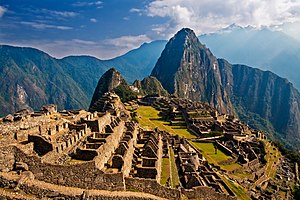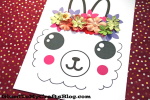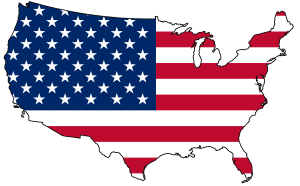Peru -- School-age

Peru is a country on the western coast of South America. Peru stretches between Ecuador in the north and Chile in the south. Colombia lies to the northeast, and Brazil and Bolivia lie to the east. To the west is the Pacific Ocean. Lima, the capital is located on the coast of the Pacific Ocean.
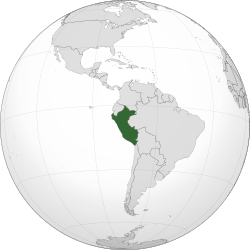
Government
The President is the head of state and head of government and also tasked with appointing the Prime Minister and the Cabinet. The president is elected to a five-year term and cannot run immediately for reelection. A former president can run again after being out of office for a full term.
The legislative power of the country is one chamber Congress with 130 members that are elected every five years.
The Judiciary interprets and applies the laws of the country. It is made up of a system of courts and the Supreme Court. The Supreme Court has 16 judges.
Flag of Peru
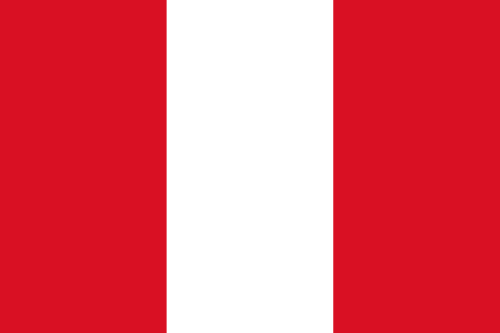
In 1824, the flag of Peru was adopted by the government, and was modified in 1950. The Peru Flag is a vertical triband with red outer bands and a middle white band.
Liberator and founding father of the Republic of Peru, Jose de San Martin selected the colors of the flag.
Peru History Video
Peru History
Peru has been the home to many ancient civilizations.
Peru was home to the Norte Chico civilization between the thirtieth century B.C.E. and the eighteenth century B.C.E. It is the oldest known civilization in the Americas and noted for building the step pyramids.
The largest and wealthiest of these ancient civilizations was the Incas, who ruled for over 100 years until the Spanish arrived in the 16th century.
The Sapa Inca (Inca Powerful King) was the head of the Inca government and all the people. Everyone worked for the Sapa Inca, he owned everything in the empire. The government controlled all aspects of people's lives - they were enslaved and had few freedoms. The common people could not own a business, luxury goods, travel on the roads, they had no freedom.
Inca Unit Lessons Grade 5
Explorers
Francisco Pizarro (1478-1541) was a Spanish conquistador who traveled through much of the Pacific coast of America along Peru.
Alexander von Humboldt (1769- 1859) Founder of modern geography.
Land
Peru has three geographic areas that run roughly parallel to each other: the Coastal Desert, the Mountains (Andes) and the Jungle. The dry coast rises quickly to the Andes mountain range and then drops to the rain forest containing the headwaters of the Amazon River.
The coastal region of Peru is its most densely settled area. Some parts are fertile but most of La Costa consists of dry and sometimes extremely arid desert regions .

La Costa - Lima
The Andes Mountains are the longest above-water mountain chain in the world. Its range stretches from north to south along the west coast of South America. It stretches from Cape Hope to Panama, through seven countries in South America,
The Andes range, together with its foothills, forms the part of Peru that is called La Sierra. Some of the worlds highest mountains can be found here, such as the Huascaran and the Yerupaja. In the southern mountains of Peru lies the mysterious lost Inca city Machu Picchu.

Andes Mountains
Lake Titicaca is the highest lake in the Americas. Peru shares control of Lake Titicaca with the neighboring country of Bolivia. The Colca Canyon is twice as deep, making it the deepest canyon on earth.
The Amazon river originates in Peru in the Peruvian Andes, at the point of two big rivers, the Marañon and the Ucayali. The Amazon Rain Forest begins as the land flattens out and goes to the northern and eastern edges of Peru.
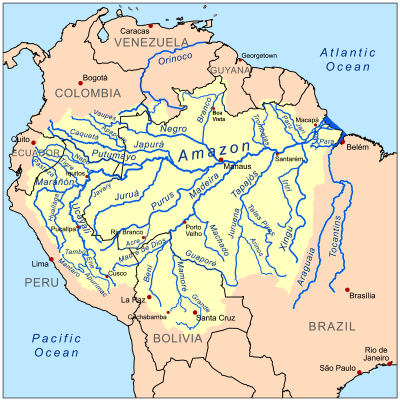
Amazon River Basin
More than 50 other rivers, many are tributaries of the Amazon river, starts in the Andes. Near the base of the mountains are cloud forests. These cloud forests stretch between the Andes Mountains and the Amazon Rain Forest. Cloud forests grow low on mountain slopes. Trees and the ground are often covered by an abundance of mosses. The cool air forms clouds and fog. Frequently there are low-level cloud cover, usually at the canopy level.
The rain forest region is in the eastern part of Peru and covers sixty-percent of the country. Peru contains the second largest segment of the Amazon rain forest after Brazil.
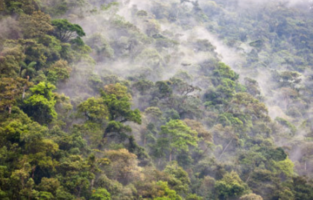
Peru Cloud Forests
Machu Picchu Video
Climate

Alpamayo mountain in the Peruvian Andes.
The climate of Peru varies widely, ranging from dry desert in the coastal region to tropical rain forest. The Andes region has a temperate climate to arctic in the highest mountains.
Plants
Peru's several climates and land has produced a diverse variety of flora.
The dry desert coastline is barren in some places, in other places the plants consists only of a few shrubs and thorny trees. For a few months a sea mist hangs over the coast the desert plants revives for a short time with plants such as begonias and lilies. Mangrove forests are found in the far north of the coastal area.
Moving inland the plants increase with many cacti and orchids.
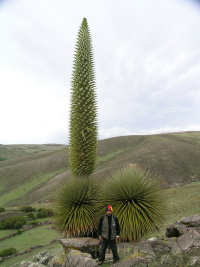
Puya raimondii also known as queen of the Andes is the world's largest bromeliad reaching up to 50 feet (15 m).
In the valleys of the Andes are cactus, orchids and different types of bromeliads. Corn and potatoes are also found in the Andes. In the cloud forests are many types of plants such as mosses, ferns, orchids and bromeliads growing on the trees. In the rain forests of the Amazon region are found deciduous trees, palms with many plants growing under the trees; ferns, shrubs, orchids, and wild ginger.
Animals

Inca Hairless dog
Peru animals range from jaguars, llamas, to the Inca Hairless dog. There are desert animals along the coast, a variety of fish in the ocean, in the Andes mountains are found spectacled bears, llama, alpaca, and a variety of animals.

Andean cock-of-the-rock also known as tunki (Quechua) can be found in the cloud forests of Peru.
Peru Is Famous For

Rainbow Mountain (Vinicunca)
Rainbow Mountain is in the Peruvian Andes. The rainbow appearance of the mountain is due to the minerals in the soil.
Peru Foods
The Inca's in Peru cultivated potatoes. When the Spanish Conquistadors conquered Peru they would carry the potato to Europe.
Corn, potatoes, quinoa, kiwicha, and legumes are Peruvian foods that are grown and eaten regularly
Peru Products
Peru's economy is characterized by a high level of foreign trade.
The economy of Peru is driven by the industries of fishing, manufacturing, mining, and tourism.
Peru is Latin America's main producer of gold, lead, and zinc. It is the second largest producer of silver in the world. It is also thought to have the world's largest reserves of silver.
The United States and Europe are Peru's largest fruit and vegetable export markets: asparagus, grapes, paprika, mango, artichoke, avocado, bananas, citrus, and onions.
Sites to See
"The Frog And The Condor" A folk tale from Peru.
Make
Things to Do
Recommended Books
If You Were Me and Lived in...Peru
by Carole P. Roman
Macca the Alpaca
by Matt Cosgrove
A Stack of Alpacas Activities at Matt Cosgrove's website.
Up and Down the Andes
by Laurie Krebs
See Also


